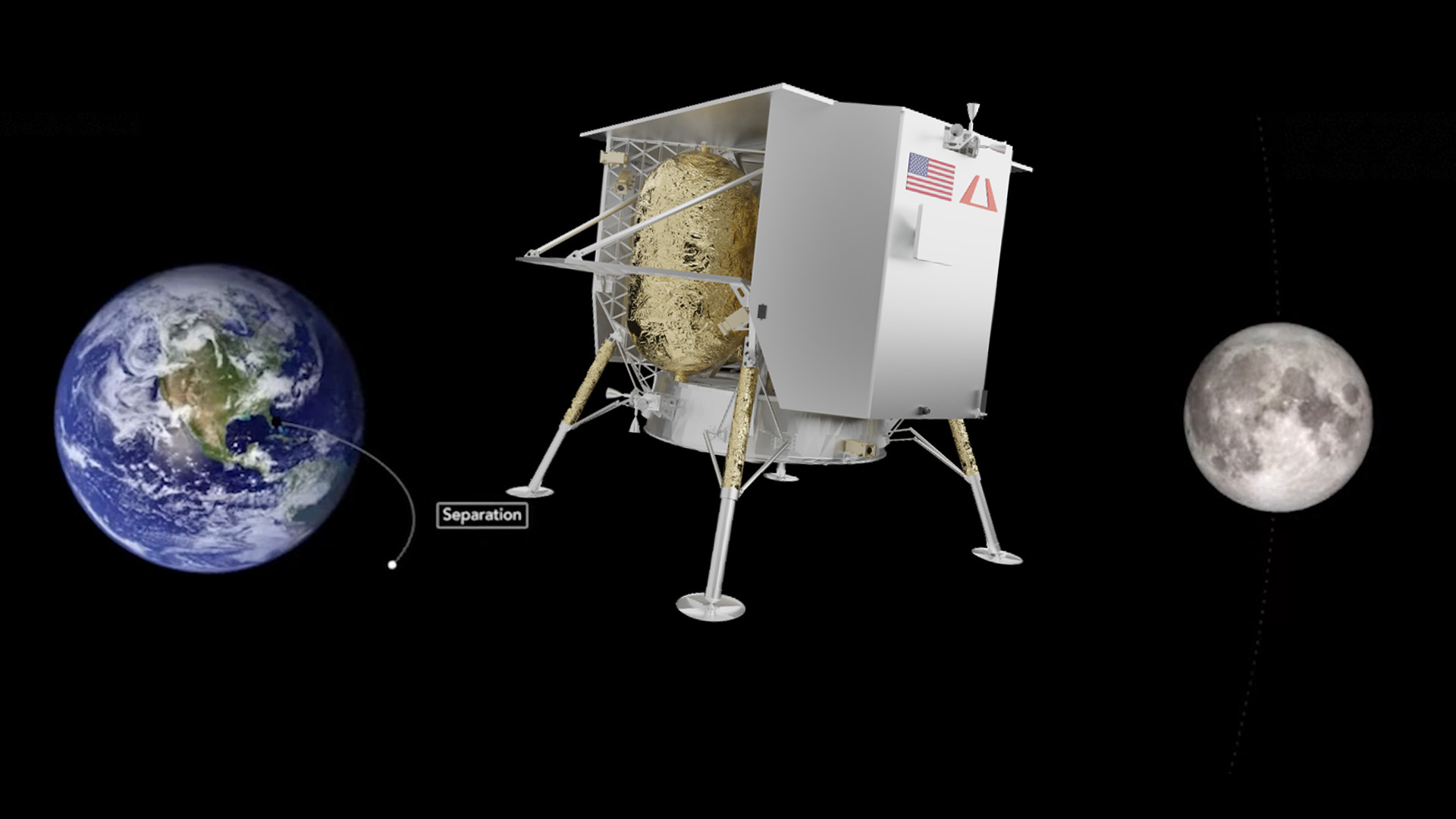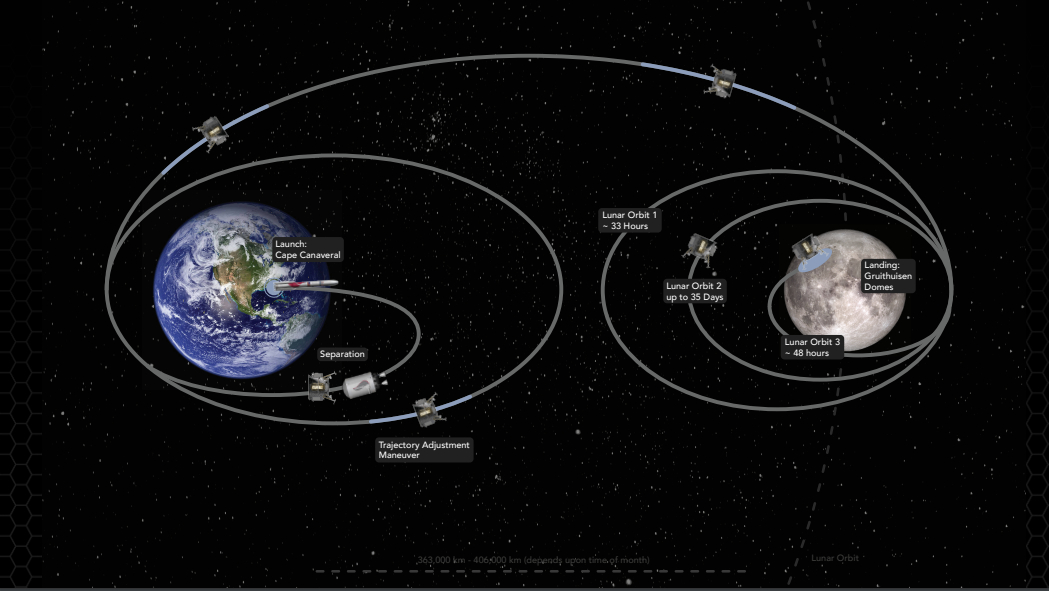
Update 1 p.m. ET: Astrobotic has issued a fourth update on the anomaly its Peregrine lunar lander is experiencing and it appears the mission will not go as planned after all.
"Unfortunately, it appears the failure within the propulsion system is causing a critical loss of propellant," the company wrote. "The team is working to try and stabilize this loss, but given the situation, we have prioritized maximizing the science and data we can capture. We are currently assessing what alternative mission profiles may be feasible at this time."
Astrobotic's history-making private lunar lander has experienced an anomaly on its way to the moon.
The Astrobotic Peregrine moon lander launched into an elliptical orbit in the wee hours of today atop the a Vulcan Centaur rocket built by the United Launch Alliance (ULA). The mission is the maiden voyage for ULA's new launch vehicle, and the Peregrine lander has the potential to be the first private mission ever to touch down safely on the lunar surface.
However, the lander suffered an anomaly just hours into voyage that may threaten its entire moon-landing mission, according to the Pittsburgh, Pennsylvania-based Astrobotic. It was expected to land on the moon on Feb. 23.
Related: Vulcan rocket launches private US moon lander, human remains in debut
"After successful propulsion systems activation, Peregrine entered a safe operational state. Unfortunately, an anomaly then occurred, which prevented Astrobotic from achieving a stable sun-pointing orientation," the company wrote in a statement released seven hours after the mission's 2:18 a.m. EST (0718 GMT) liftoff from Cape Canaveral Space Force Station in Florida. "The team is responding in real time as the situation unfolds and will be providing updates as more data is obtained and analyzed."
In a second update, Astrobotic reported that a propulsion issue may be the cause.
"The team believes that the likely cause of the unstable sun-pointing is a propulsion anomaly that, if proven true, threatens the ability of the spacecraft to soft land on the Moon," the company wrote on X, formerly Twitter.

A number of commercial and scientific payloads are onboard the Peregrine lander. NASA contracted Astrobotic to deliver five scientific experiments designed and overseen by the agency; some will study the moon's surface, atmosphere and radiation environment, while the Laser Retroreflector Array (LRA) experiment is set to install a system of mirrors and lasers on the lunar surface and to measure very precise distances, and will function as Peregrine's permanent location marker on the moon.

Mexico has five tiny autonomous robots on Peregrine alongside a small Nano Lunar Rover built by students at Carnegie Mellon University. A piece of Mt. Everest is aboard the flight, and space memorial companies Celestis and Elysium Space are attempting to place human DNA and remains on the lunar surface from mission "participants," whose remains will be placed permanently on the moon's surface following Peregrine's landing.
A number of commercial payloads are also onboard, including a lunar Bitcoin, an archive of miniaturized books and texts from the Arch Mission Foundation, and the "MoonBox" from logistics and shipping company DHL that contains keepsakes and messages from 100,000 people around the world.
All of those payloads now hang in the balance now, though, unless Astrobotic can remedy the anomaly that Peregrine is currently experiencing. A chief concern is Peregrine's battery life, the company said. The spacecraft needs to point its solar arrays to the sun to generate power for its systems.
"As the team fights to troubleshoot the issue, the spacecraft battery is reaching operationally low levels," Astrobotic wrote. "Just before entering a known period of communication outage, the team developed and executed an improvised maneuver to reorient the solar panels toward the Sun. Shortly after this maneuver, the spaceraft entered an expected period of communication loss."
Peregrine already made what is known as a phasing loop around Earth to perform course corrections and place itself on a trajectory to enter a high, elliptical lunar orbit. If it reaches the moon, it will gradually lower and circularize its orbit to about 62 miles (100 kilometers) before beginning its descent to the south pole region of the lunar surface on Feb. 23.
ULA's Vulcan Centaur rocket, meanwhile, appears to have performed beautifully on its first flight. Meanwhile, Astrobotic is providing updates on its efforts to solve the Peregrine moon lander on X.







